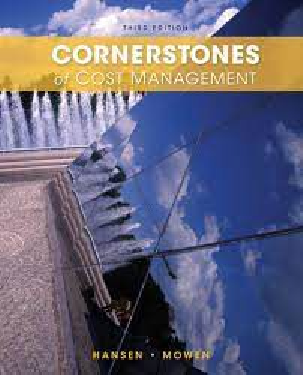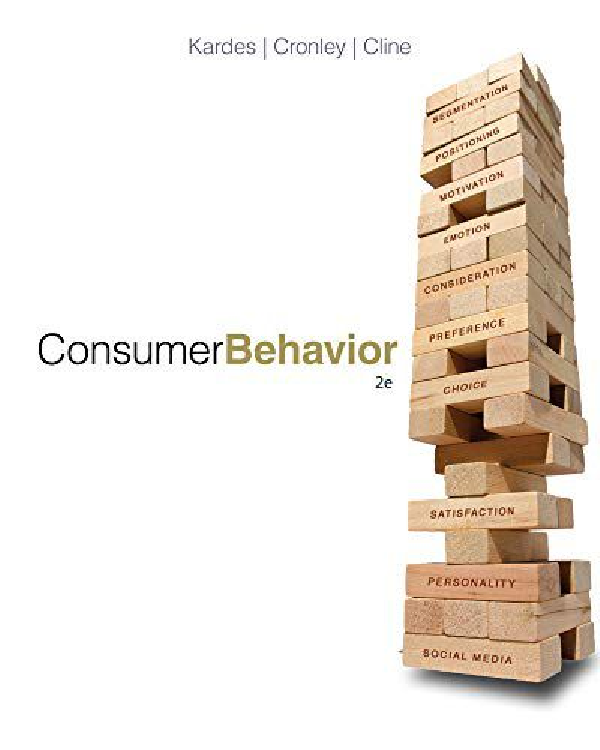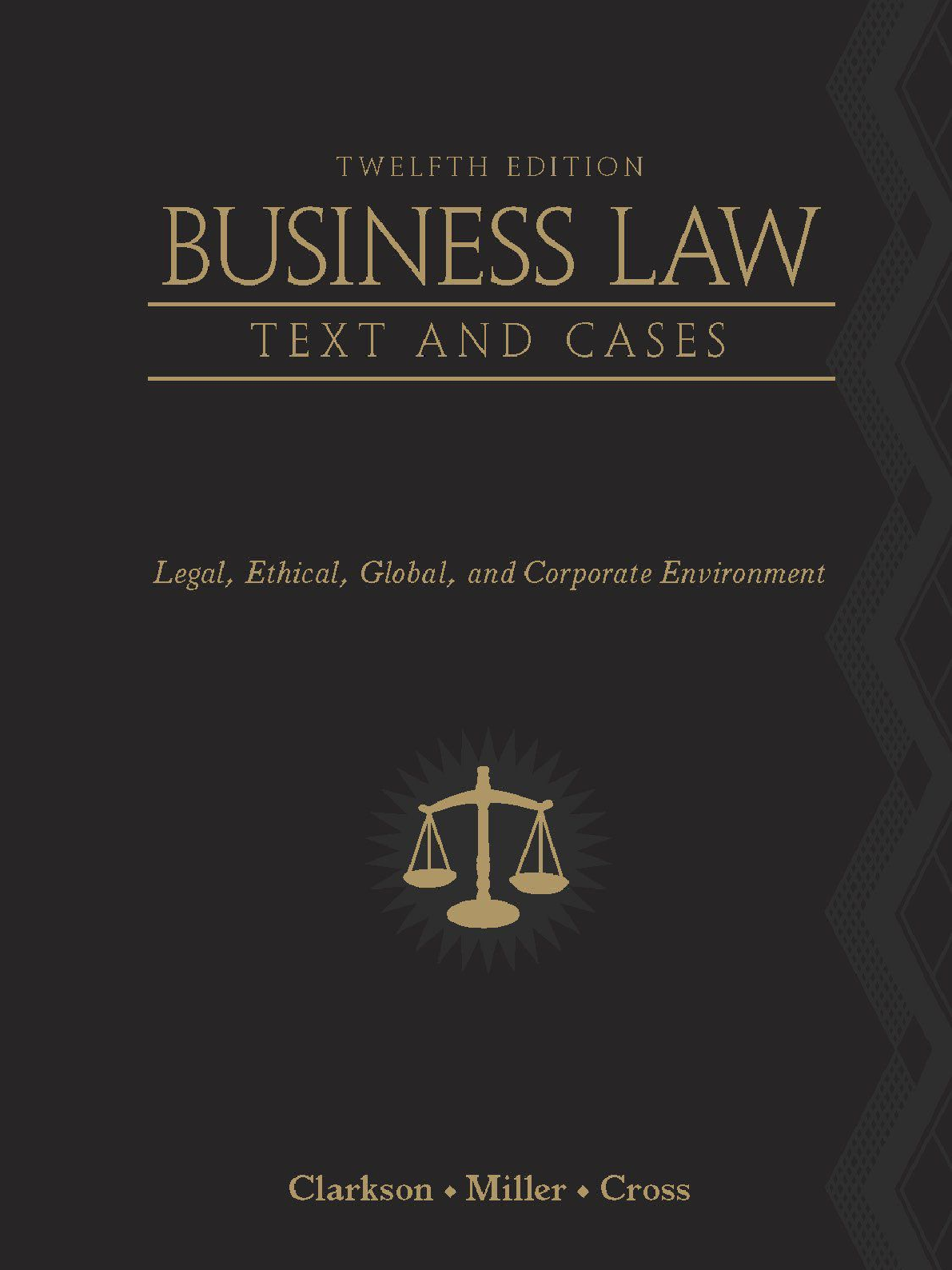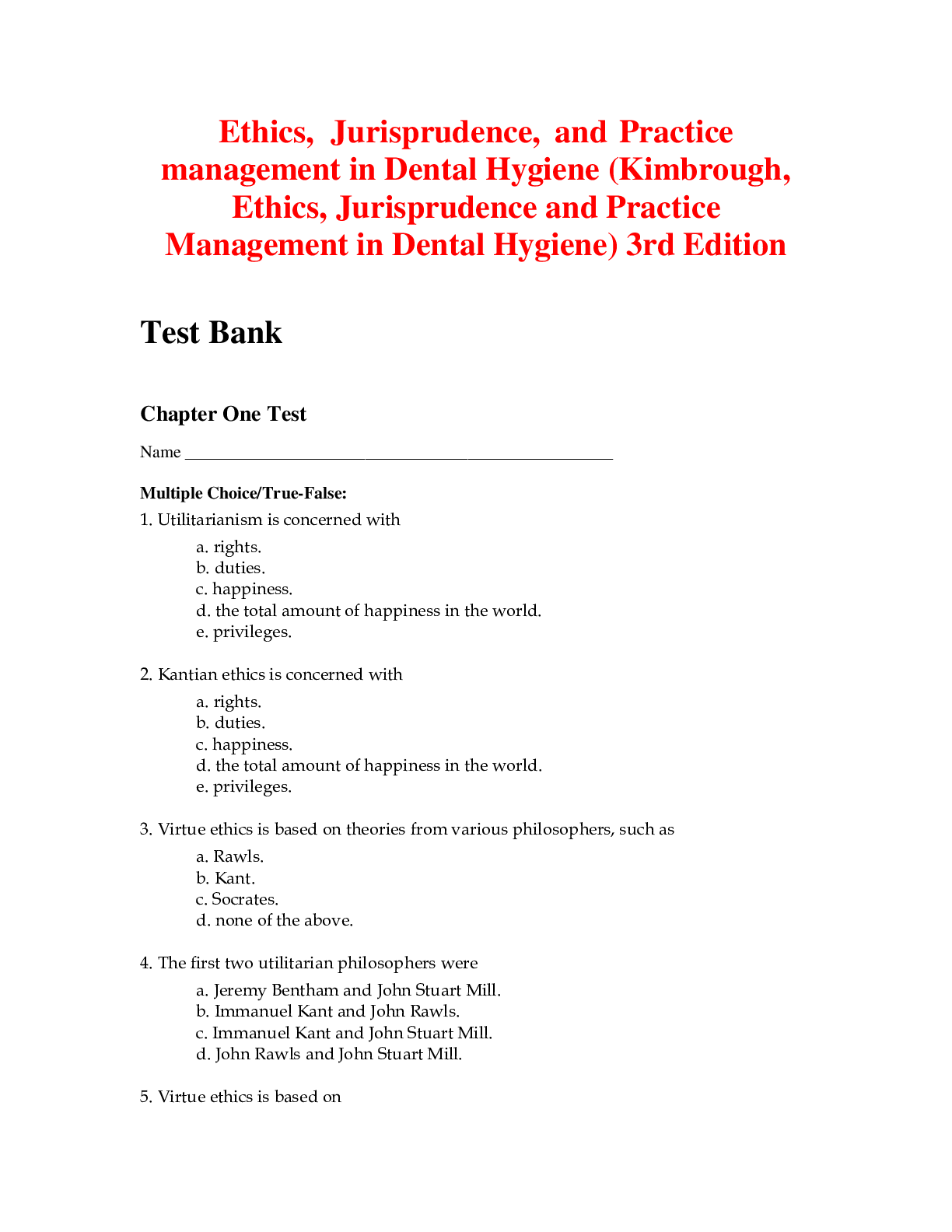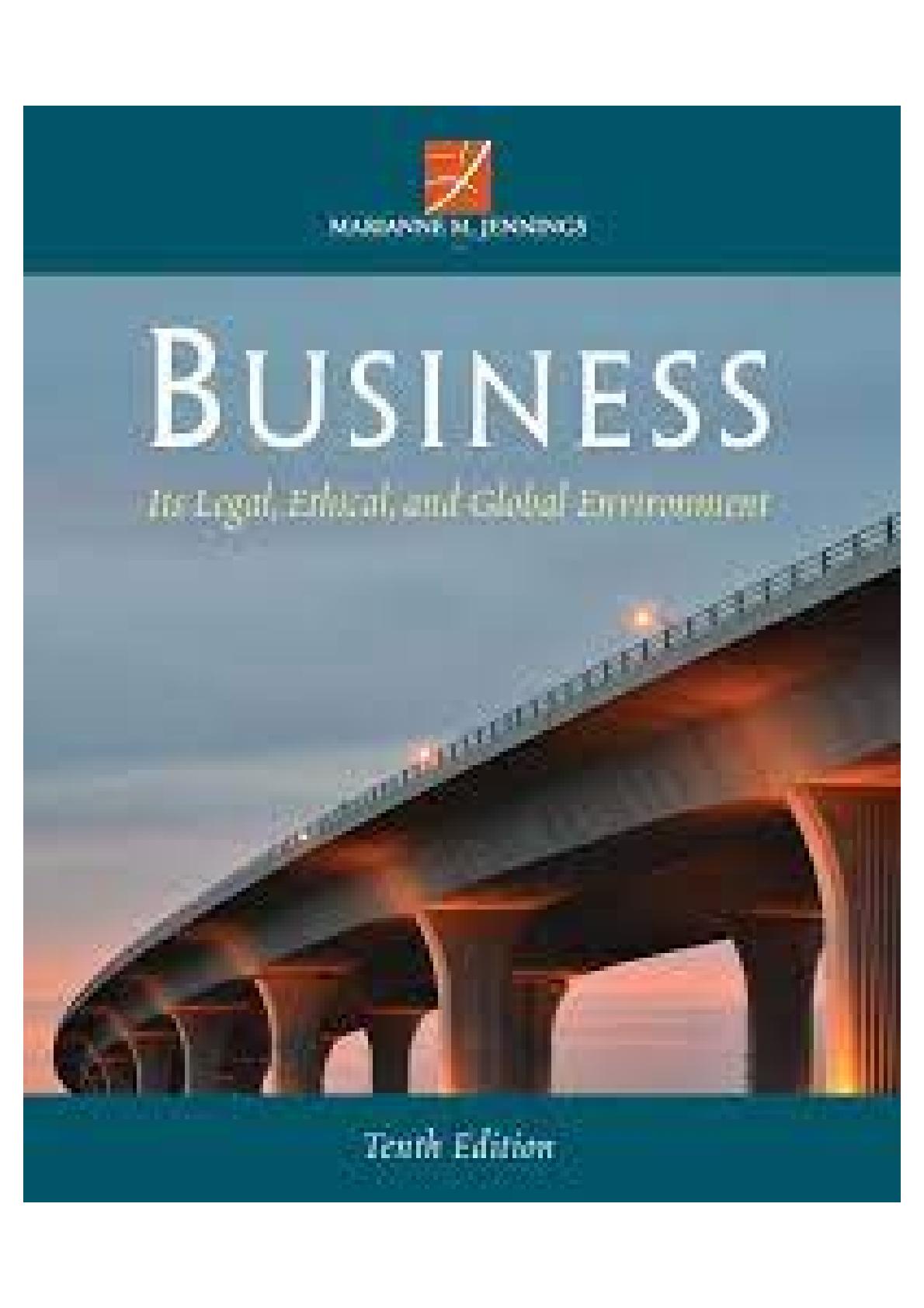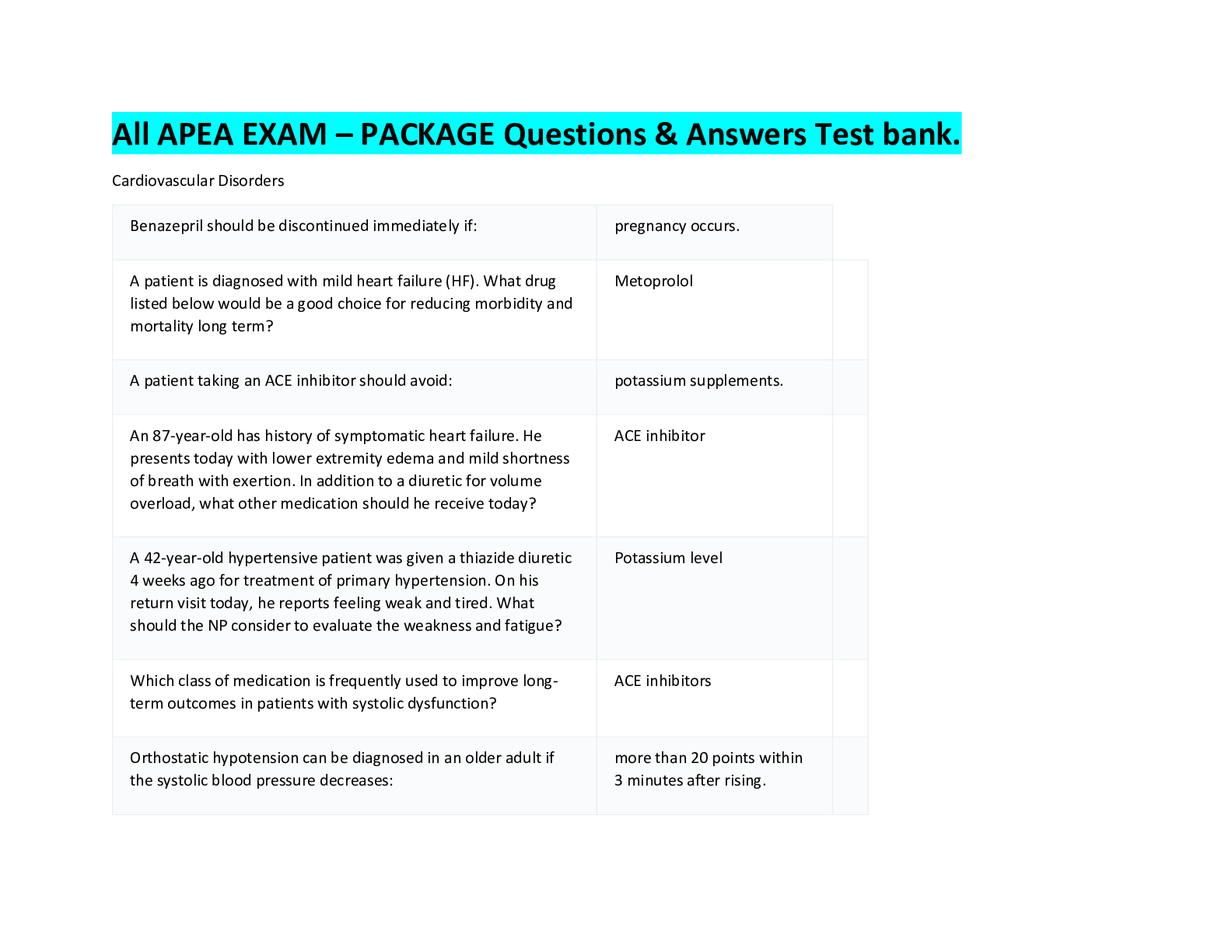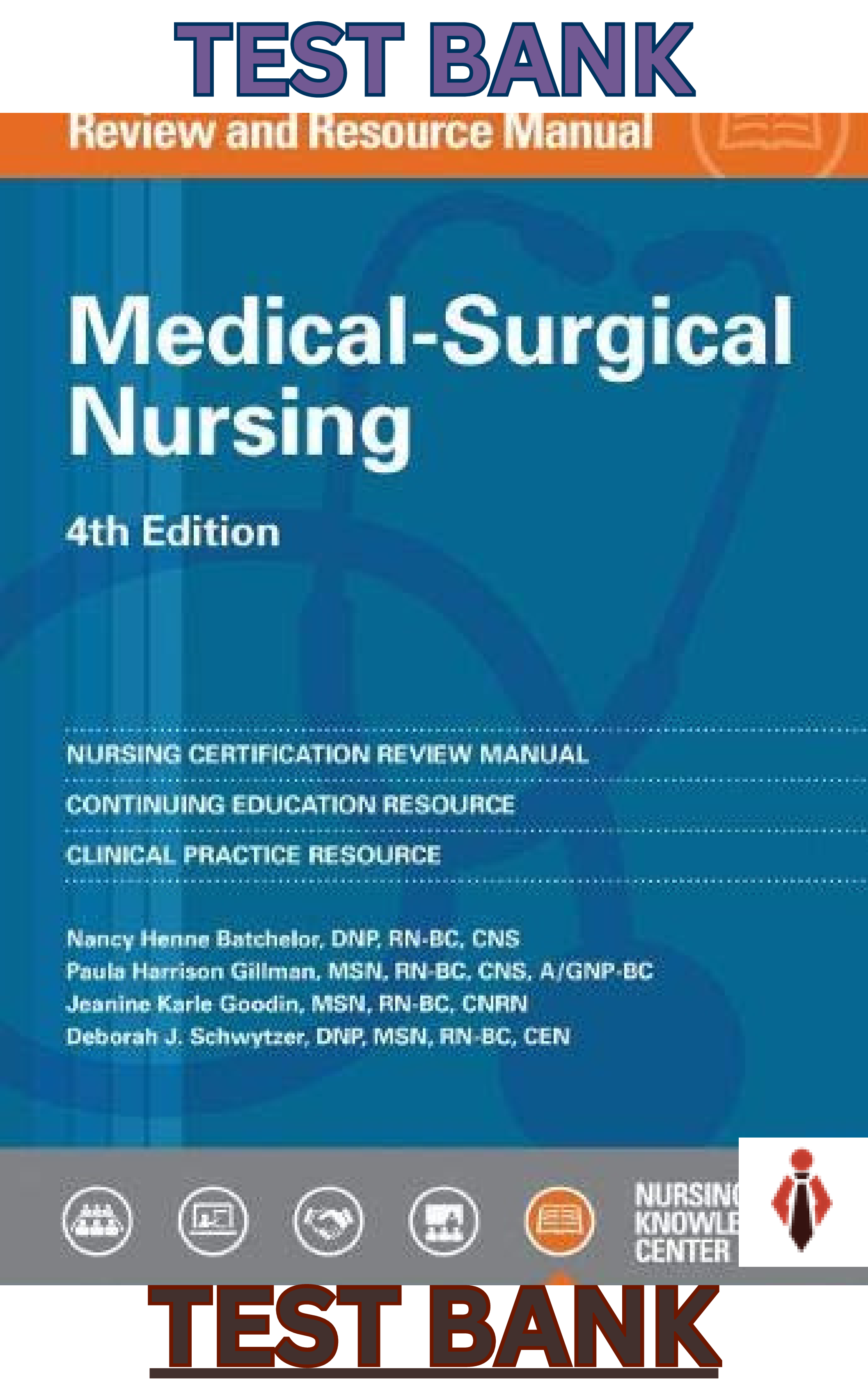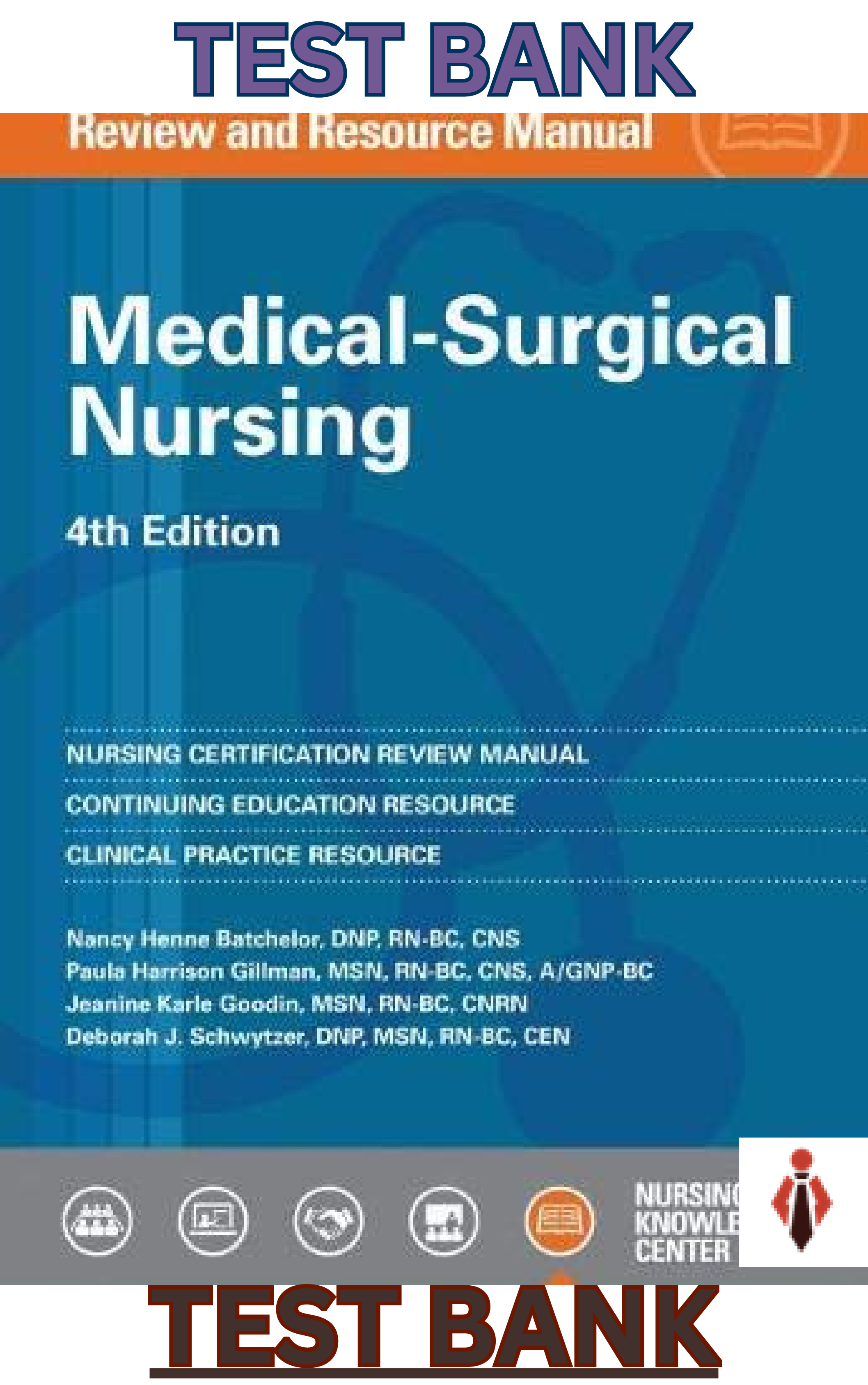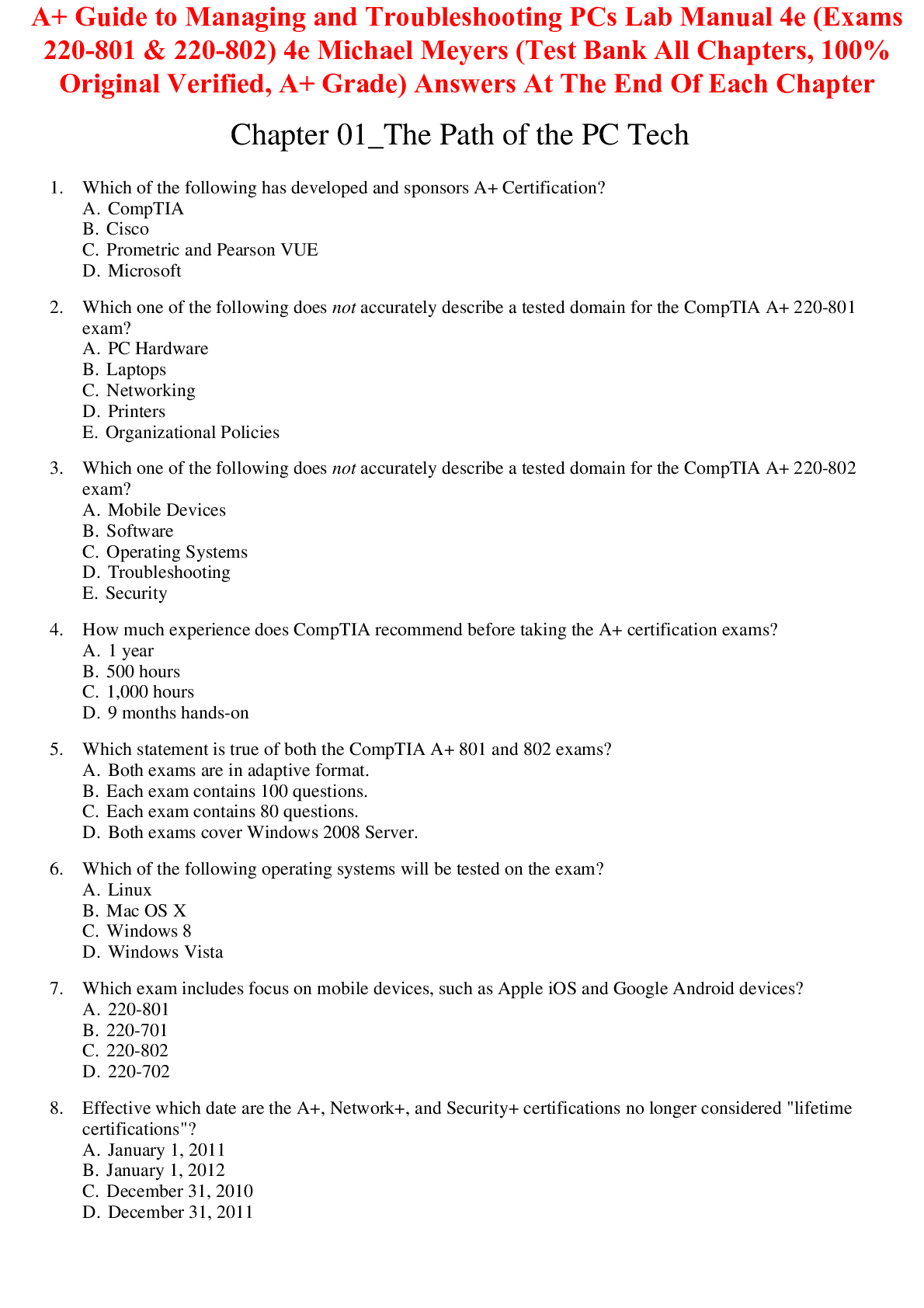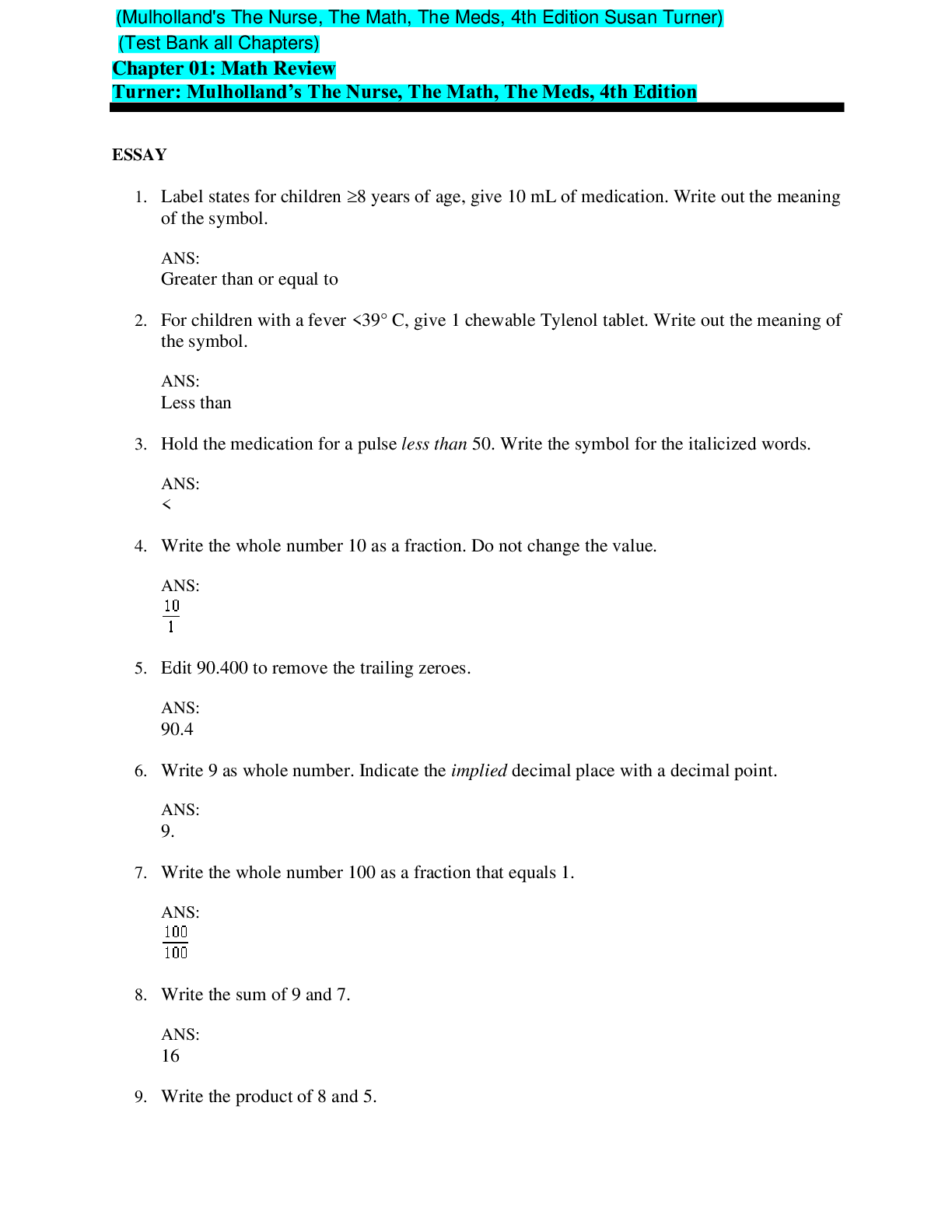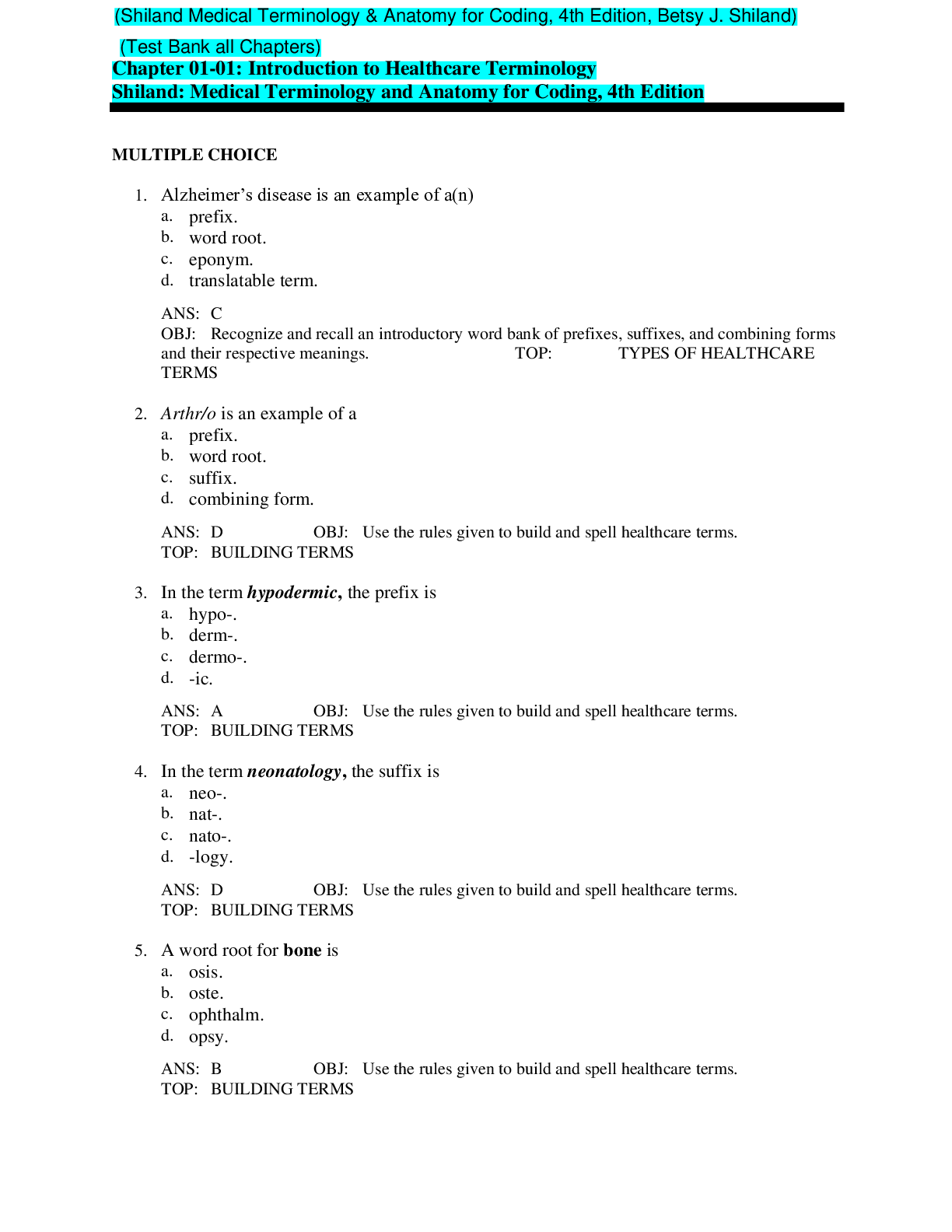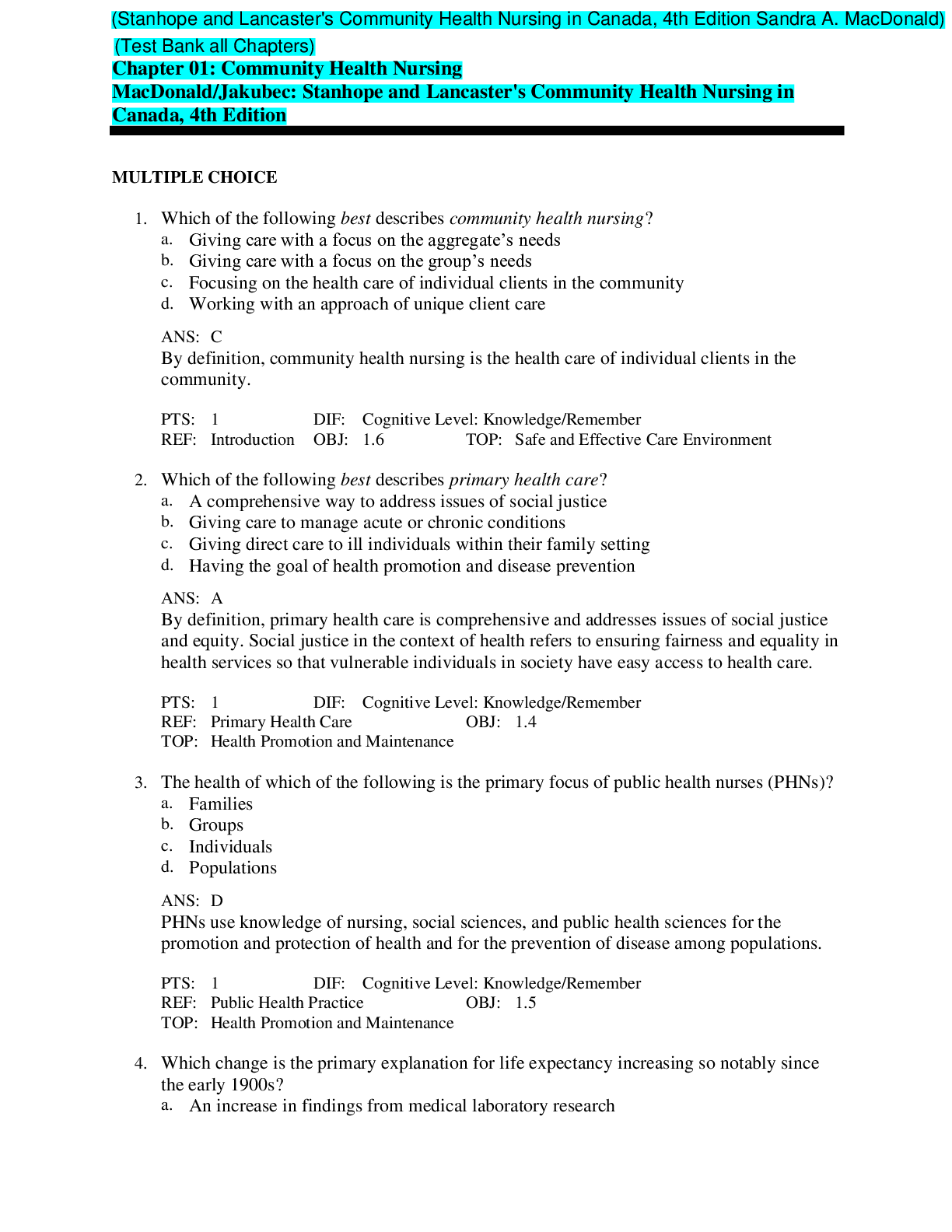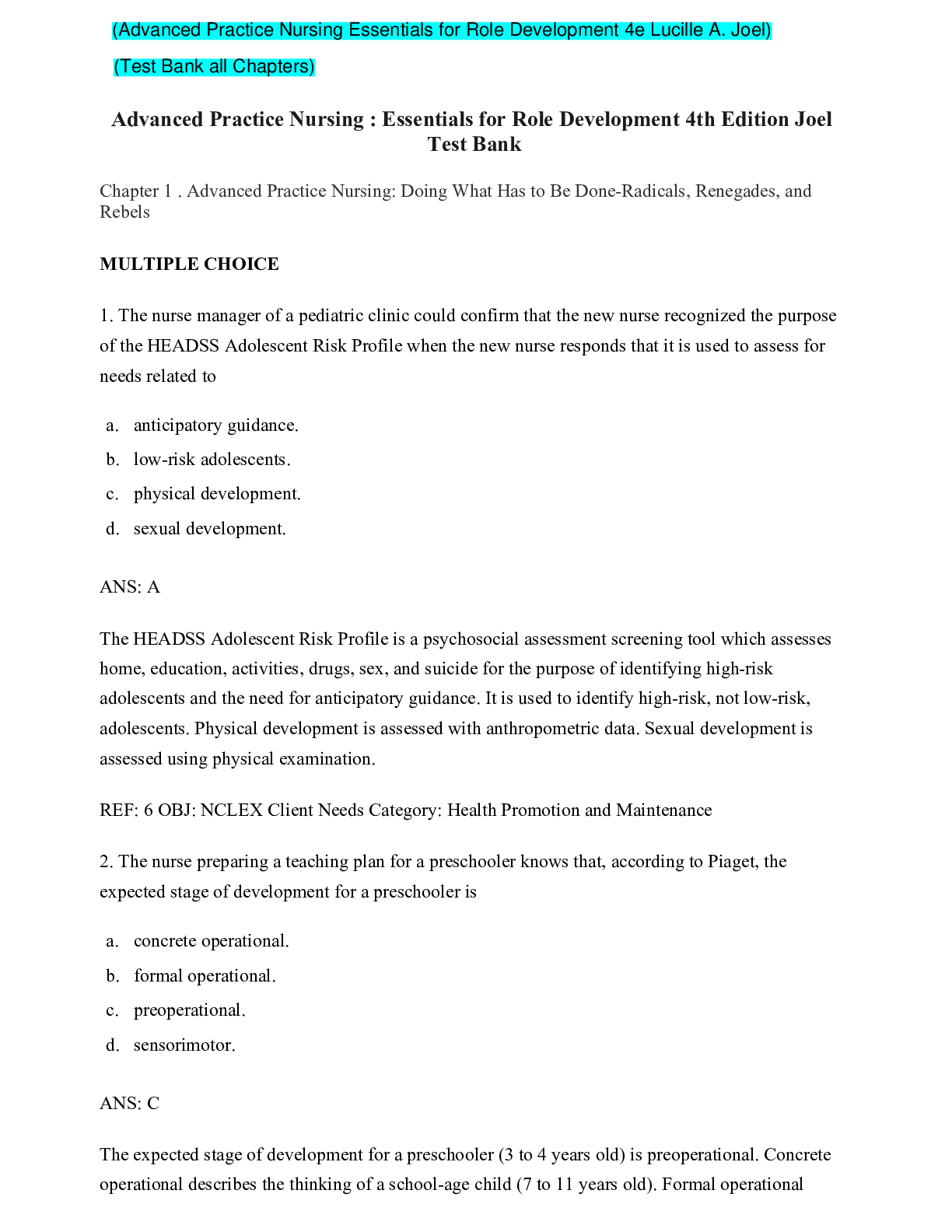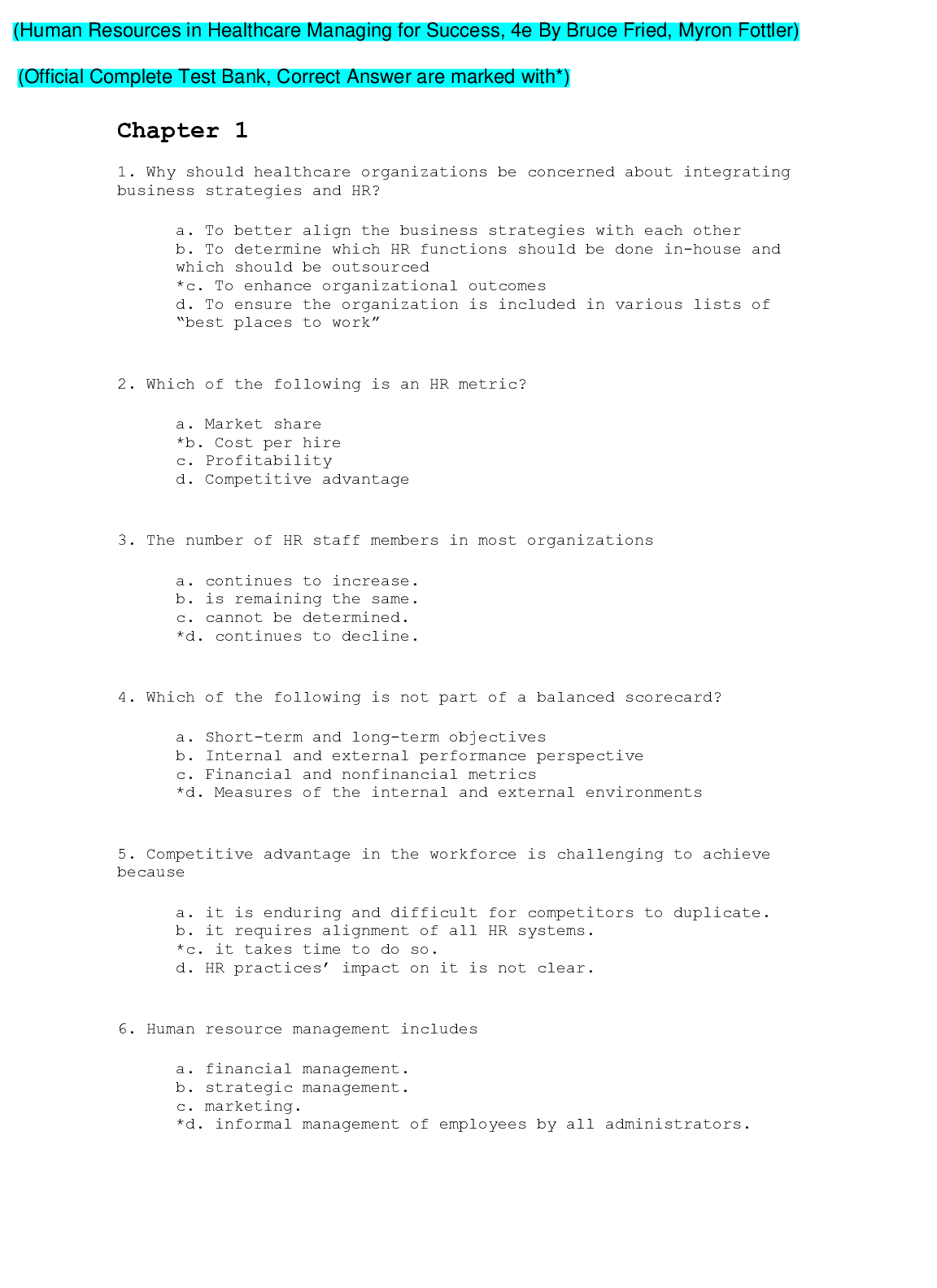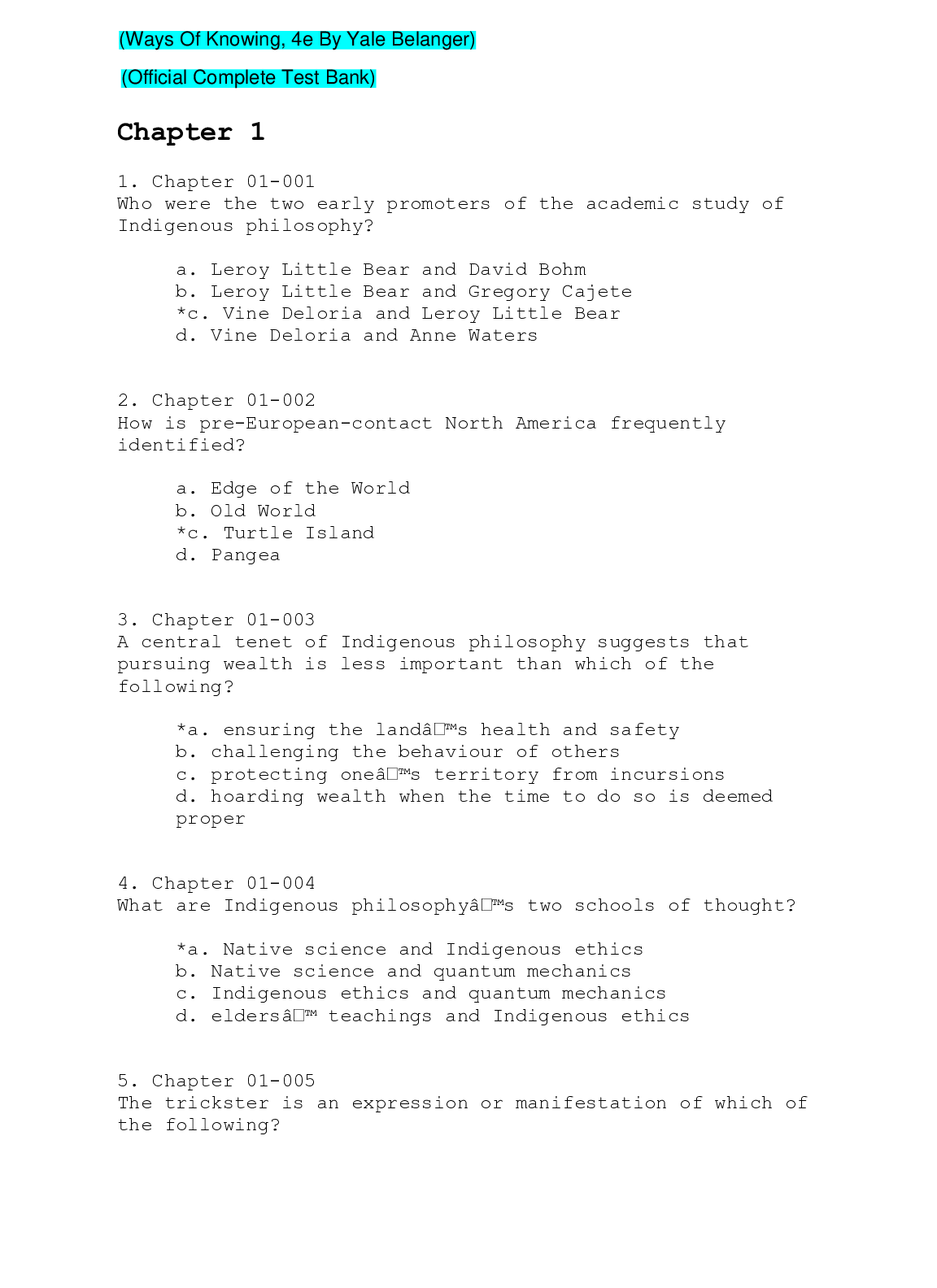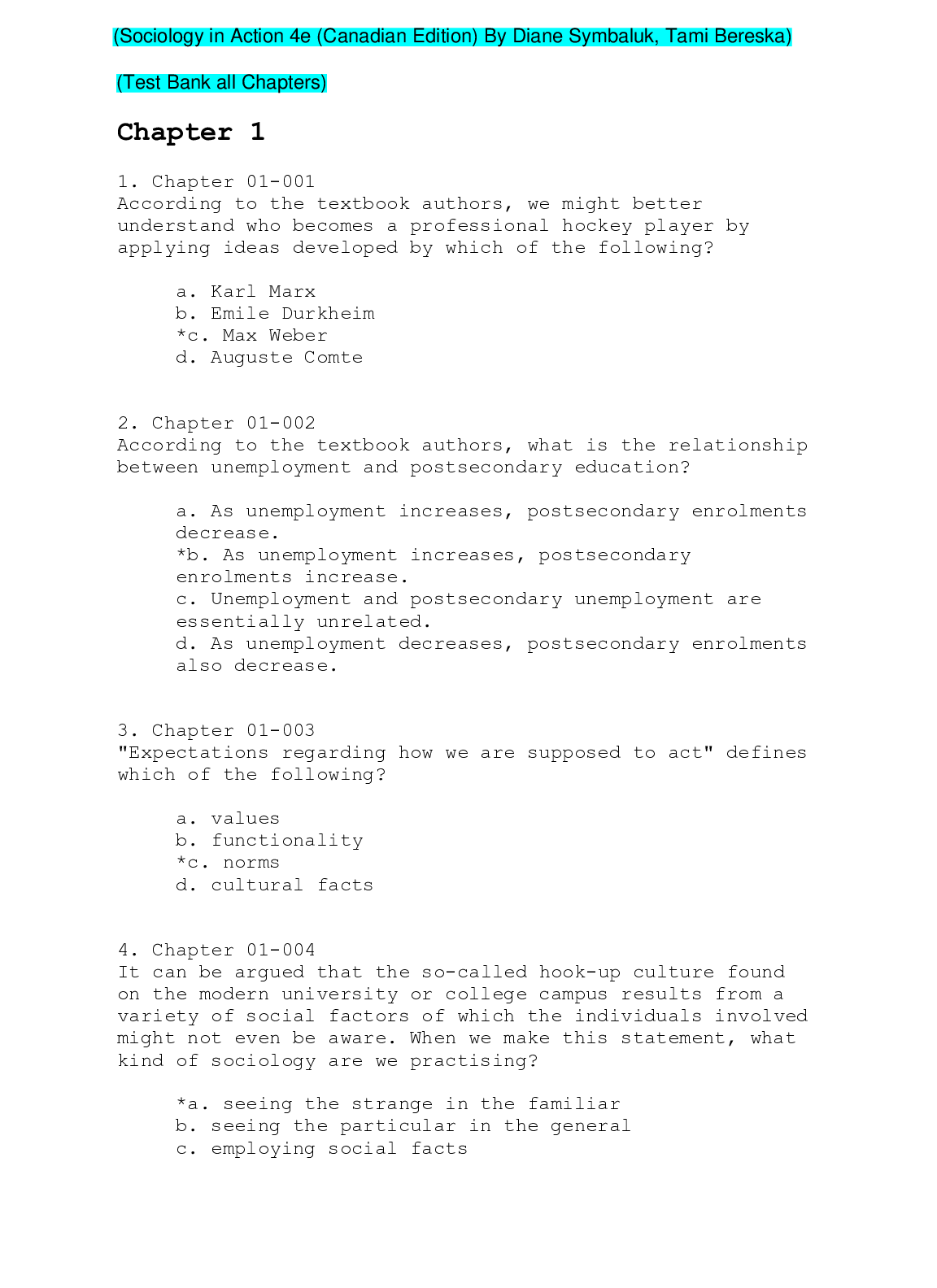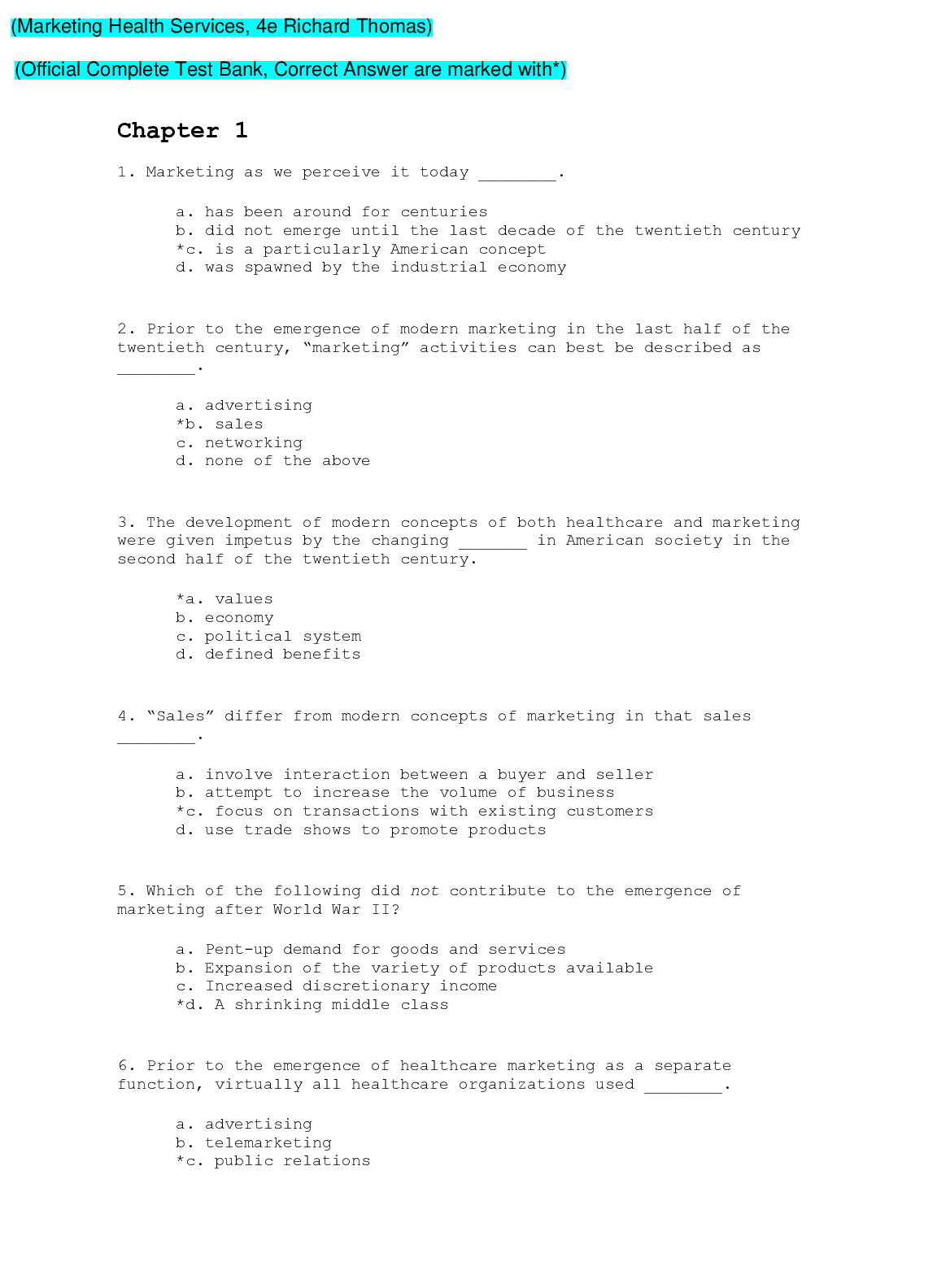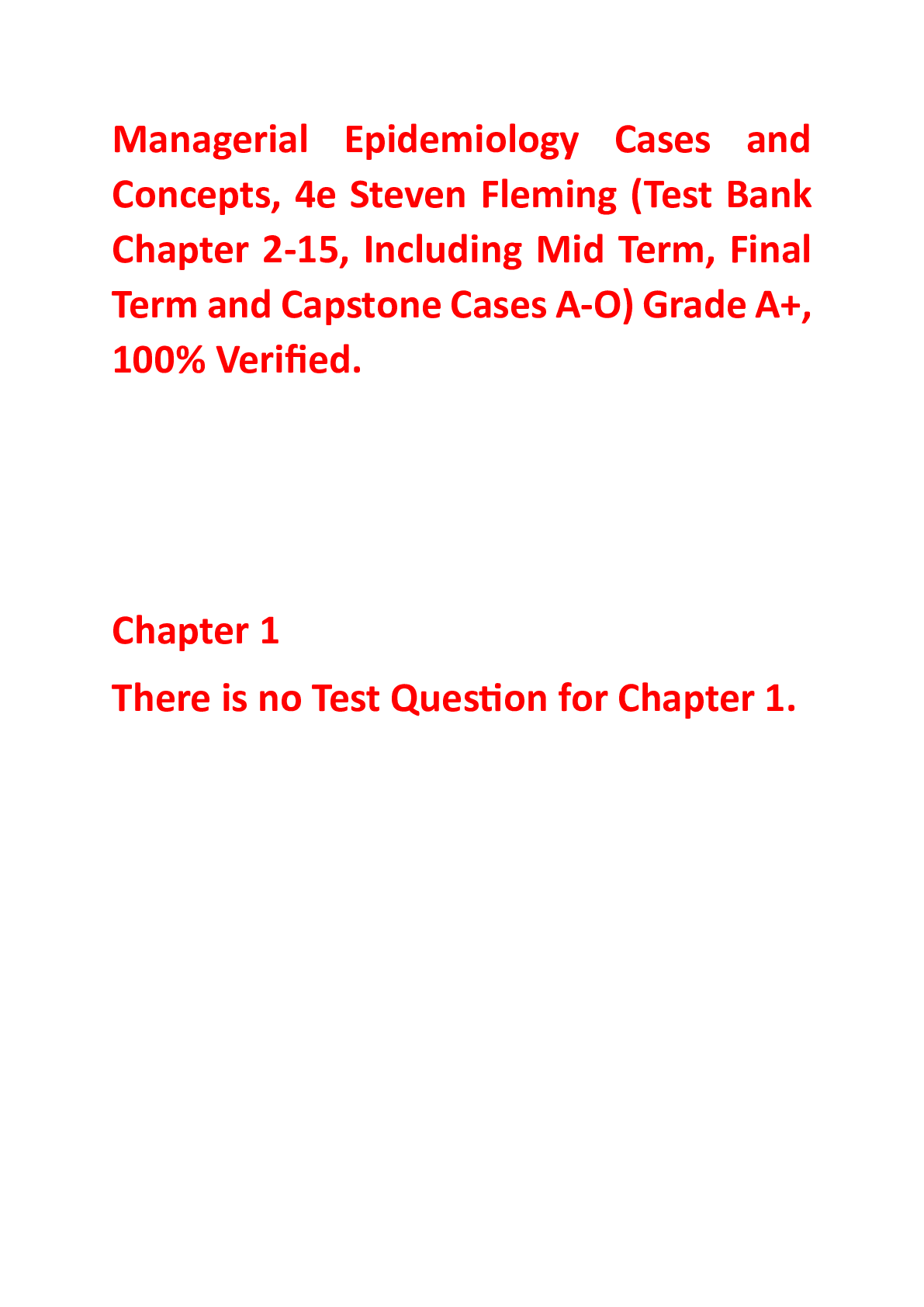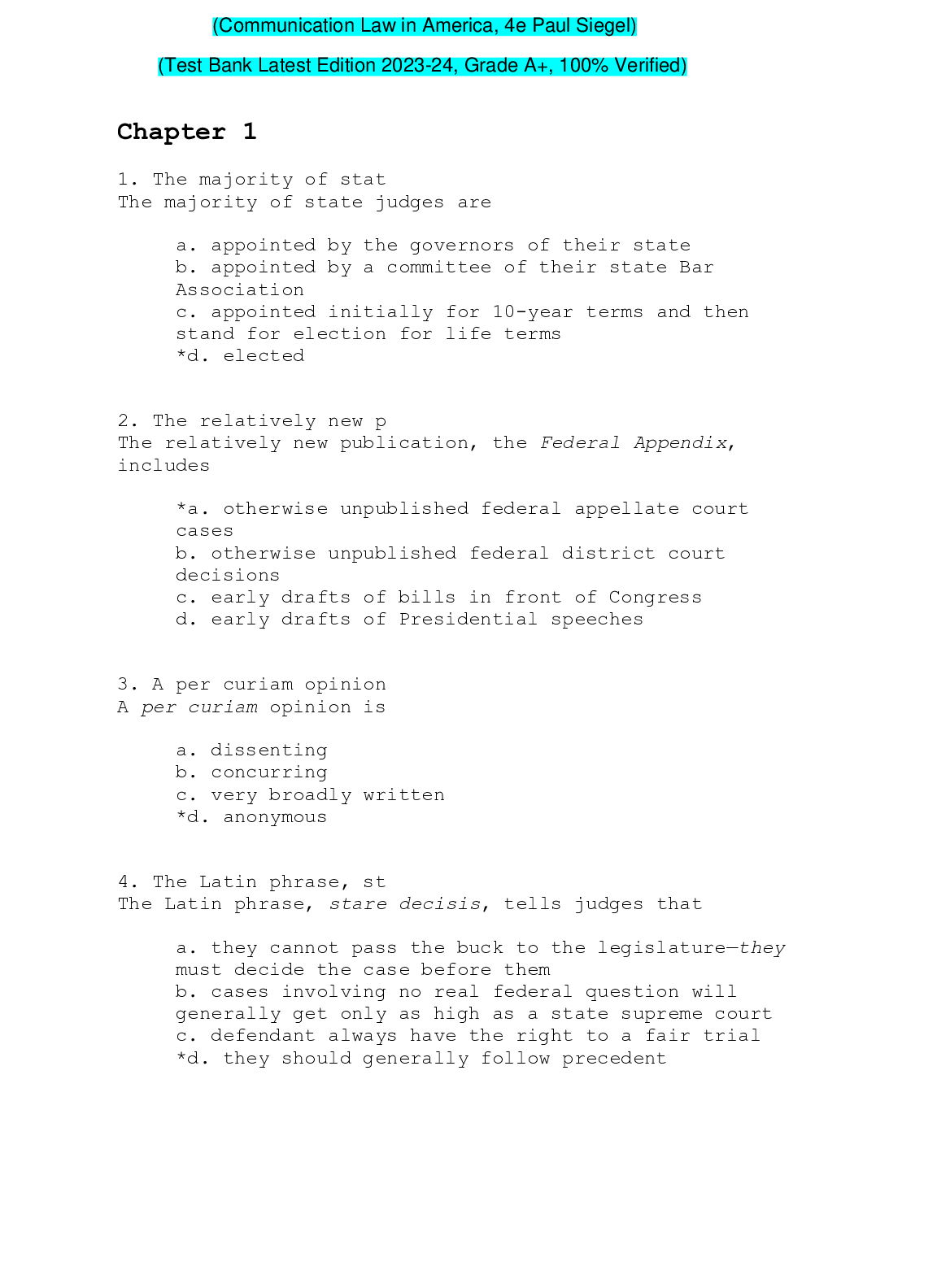Business Management > TEST BANK > TESTBANK for Contemporary Project Management 4th Edition By: Timothy Kloppenborg (Complete Download (All)
TESTBANK for Contemporary Project Management 4th Edition By: Timothy Kloppenborg (Complete Download)
Document Content and Description Below
TESTBANK for Contemporary Project Management 4th Edition By: Timothy Kloppenborg (Complete Download) Part 1: Organizing Projects Ch 1: Introduction to Project Management 1.1: What is a Project? 1.... 2: History of Project Management 1.3: How Can Project Work Be Described? 1.4: Understanding Projects 1.5: Project Roles 1.6: Overview of the Book Summary Ch 2: Project Selection and Prioritization 2.1: Strategic Planning Process 2.2: Portfolio Management 2.3: Securing Projects Summary Ch 3: Organizational Capability: Structure, Culture, and Roles 3.1: Types of Organizational Structures 3.2: Organizational Culture and Its Impact on Projects 3.3: Project Life Cycles 3.4: Agile Project Management 3.5: Project Executive Roles 3.6: Project Management Roles 3.7: Project Team Roles Summary Ch 4: Chartering Projects 4.1: What is a Project Charter? 4.2: Why is a Project Charter Used? 4.3: When is a Charter Needed? 4.4: Typical Elements in a Project Charter 4.5: Constructing a Project Charter 4.6: Ratifying the Project Charter 4.7: Starting a Project Using Microsoft Project Summary Part 2: Planning Projects Ch 5: Stakeholder Analysis and Communication Planning 5.1: Develop the Project Management Plan 5.2: Identify Stakeholders 5.3: Build Relationships 5.4: Plan Communications Management 5.5: Project Meeting Management 5.6: Communications Needs of Global and Virtual Project Teams 5.7: Communications Technologies Summary Ch 6: Scope Planning 6.1: Plan Scope Management 6.2: Collect Requirements 6.3: Define Scope 6.4: Work Breakdown Structure (WBS) 6.5: Establish Change Control 6.6: Using MS Project for Work Breakdown Structures (WBS) Summary Ch 7: Scheduling Projects 7.1: Plan Schedule Management 7.2: Purposes of a Project Schedule 7.3: Historical Development of Project Schedules 7.4: How Project Schedules are Limited and Created 7.5: Define Activities 7.6: Sequence Activities 7.7: Estimate Activity Duration 7.8: Develop Project Schedules 7.9: Uncertainty in Project Schedules 7.10: Show the Project Schedule on a Gantt Chart 7.11: Using Microsoft Project for Critical Path Schedules Summary Ch 8: Resourcing Projects 8.1: Abilities Needed When Resourcing Projects 8.2: Estimate Resource Needs 8.3: Plan Human Resource Management 8.4: Project Team Composition Issues 8.5: Assign a Resource to Each Activity 8.6: Dealing with Resource Overloads 8.7: Compress the Project Schedule 8.8: Alternative Scheduling Methods 8.9: Using MS Project for Resource Allocation Summary Ch 9: Budgeting Projects 9.1: Plan Cost Management 9.2: Estimate Cost 9.3: Determine Budget 9.4: Establishing Cost Control 9.5: Using MS Project for Project Budgets Summary Ch 10: Project Risk Planning 10.1: Plan Risk Management 10.2: Identify Risks 10.3: Risk Analysis 10.4: Plan Risk Responses Summary Ch 11: Project Quality Planning and Project Kickoff 11.1: Development of Contemporary Quality Concepts 11.2: Core Project Quality Concepts 11.3: Plan Quality Management 11.4: Project Quality Tools 11.5: Develop Project Management Plan 11.6: Kickoff Project 11.7: Baseline and Communicate Project Management Plan 11.8: Using MS Project for Project Baselines Summary Part 3: Performing Projects Ch 12: Project Supply Chain Management 12.1: Introduction to Project Supply Chain Management 12.2: Plan Procurement Management 12.3: Conduct Procurements 12.4: Contract Types 12.5: Control Procurements 12.6: Improving Project Supply Chains Summary Ch 13: Leading and Managing Project Teams 13.1: Acquire Project Team 13.2: Develop Project Team 13.3: Manage Project Team 13.4: Manage and Control Stakeholder Engagement 13.5: Managing Project Conflicts Summary Ch 14: Determining Project Progress and Results 14.1: Project Balanced Scorecard Approach 14.2: Internal Project Issues 14.3: Customer Issues 14.4: Financial Issues 14.5: Using MS Project to Monitor and Control Projects 14.6: Replanning If Necessary Summary Ch 15: Finishing the Project and Realizing the Benefits 15.1: Validate Scope 15.2: Close Procurements 15.3: Close Project 15.4: Post-Project Activities 15.5: Using MS Project for Project Closure [Show More]
Last updated: 10 months ago
Preview 1 out of 1100 pages
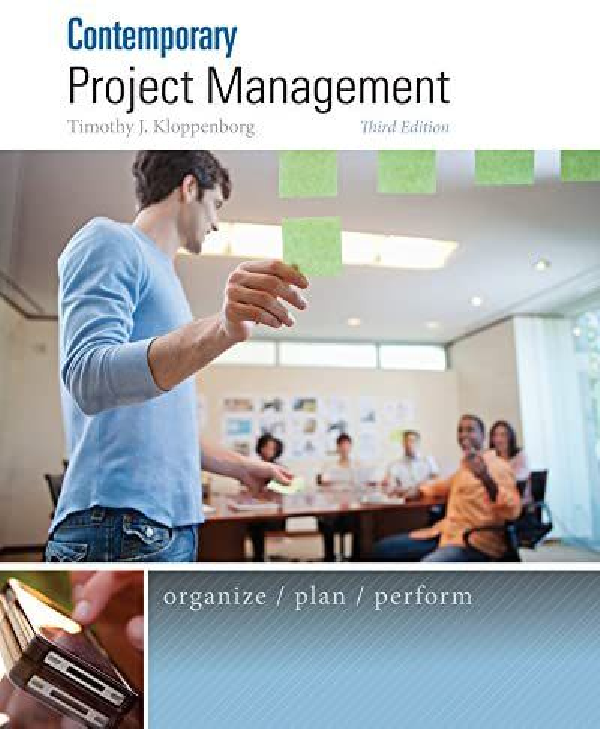
Reviews( 0 )
Document information
Connected school, study & course
About the document
Uploaded On
Oct 21, 2021
Number of pages
1100
Written in
Additional information
This document has been written for:
Uploaded
Oct 21, 2021
Downloads
0
Views
116

